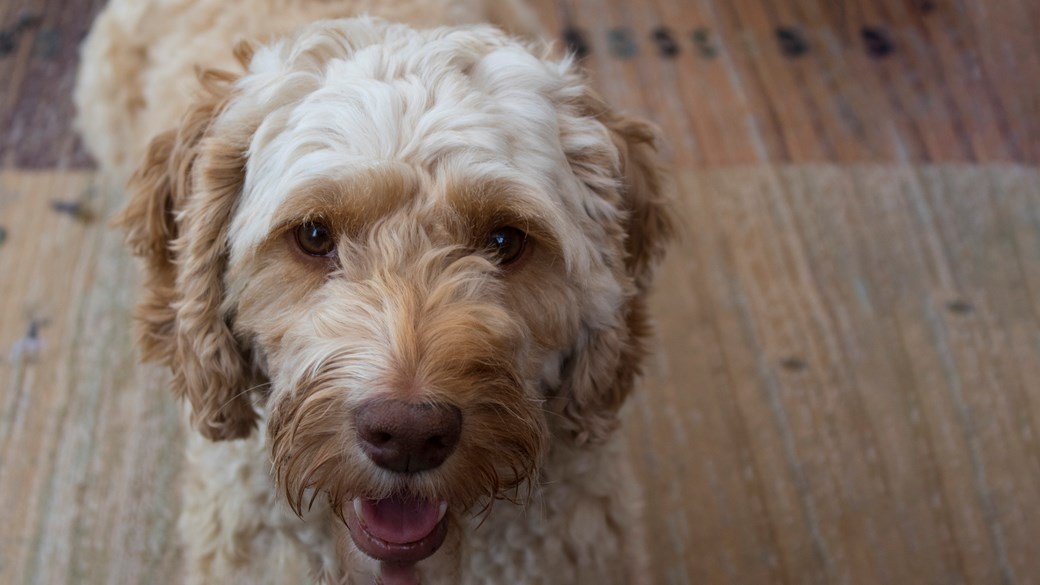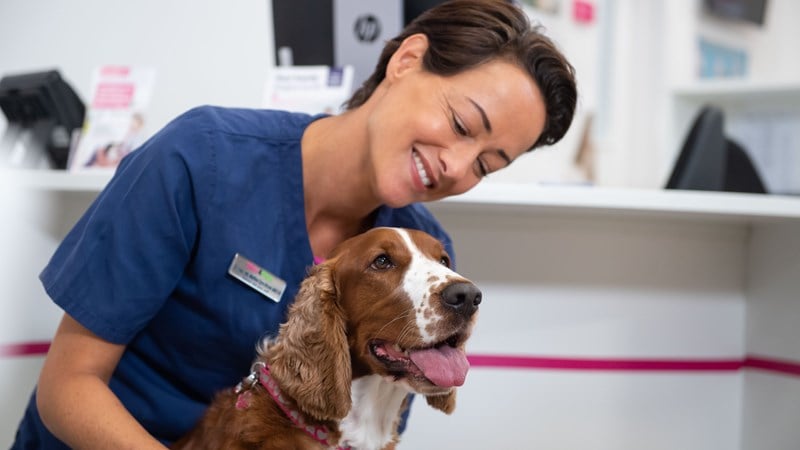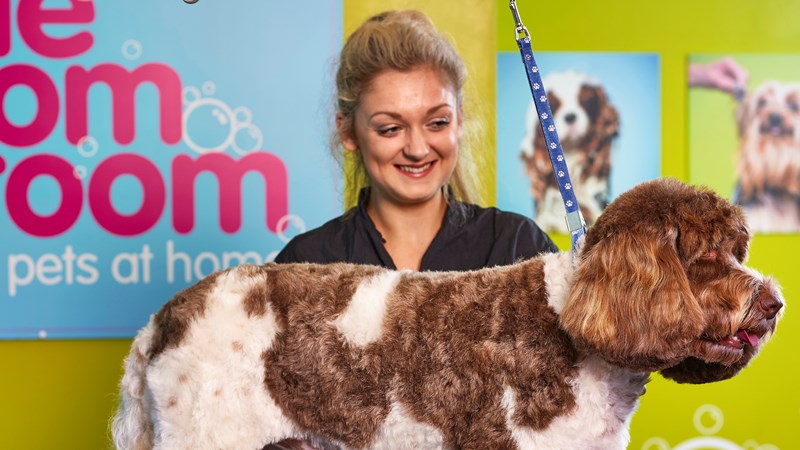
Grooming Dogs
Our furry best friends deserve to look their best, and spending time grooming them can be a wonderful bonding experience for owners.
Grooming your dog does more than just help them to look good. Did you know, it can
bring about lots of other advantages? Check out our guide to the benefits of grooming and find out how it can help to keep your dog happy and healthy, whatever type of coat they have.
Commonly asked questions
People often think that grooming only applies to certain breeds of dog and that it’s done mainly for aesthetic reasons or must be carried out by a professional. In fact, grooming has many benefits in addition to making a dog smell nice or look smart.
It’s great for bonding, it can be calming if done gently, and it acts like a massage, encouraging the circulation and distributing natural oils throughout the skin and coat. It doesn’t have to involve frequent bathing and trimming – you can think of it more as part of your dog’s routine care.
It also means that you can be checking for lumps, bumps or parasites such as fleas and ticks. Especially in the long coated breeds, these can all be missed during day to day activities but if you’re able to get into a regular grooming habit you’ll quickly notice anything unusual.
The ideal time to start getting your dog used to grooming, is when they’re a puppy but that doesn’t mean you can't start now with an adult dog. The trick is little and often, and go slowly with them.
Start by letting your dog sniff the brush or comb and use a reassuring voice so they know it’s nothing to be scared of. The use of treats can come in very useful here. Once your dog has had a good sniff of the brush, gently run it over their back and down their legs whilst constantly talking to them.
It should be an enjoyable experience for both of you, and a grooming session that leads to stress is something we want to avoid! If your dog starts to show any signs of discomfort or is no longer tolerating the grooming then it’s best to stop, rest and start again when you’re both ready. Always end any grooming session with lots of praise and perhaps produce their favourite toy at the end as a reward.
How often you groom your dog will depend on their type of coat. Some dogs only need grooming once a week, others daily. If you need any advice on grooming, have a chat with your vet or vet nurse at your next visit.
There’s lots of choice available when it comes to grooming brushes for dogs. Some focus on removing the underlying “dead” fur, whilst others are for the simple smoothing of the upper layers of fur. Your choice will often depend on what type of coat your dog has.
There’s a really good guide produced by our friends at Pets at Home about how to choose the best brush or comb for your dog. Click here to take a look.
Read more about grooming
When you groom your dog, you can use your eyes, as well as your fingers, to check them over thoroughly. You’ll be able to spot parasites, such as fleas and ticks, or foreign objects, like grass seeds, before they become a problem. You can gently examine ears for any unusual smells or discharge. You can check whether hair is getting long and falling into the eyes, which can cause discomfort and eye problems.
As you work gently through your dog's coat, you’ll be able to detect any tangled hair that may be the beginning of a mat. Matted coats develop when hair falls out and drops into the rest of the coat. If these loose hairs are not brushed out, and especially if the coat isn’t clean, they can build up and weave the living hairs together. Mats are uncomfortable because they pull on the skin, and they can interfere with movement if they develop in certain areas, such as behind the elbows, or on the insides of the back legs. They also collect debris and dirt and, once mats begin, they can soon build up.
If you can remove loose hairs regularly and keep your dog's coat clean, mats shouldn’t have a chance to develop and grooming need not become a big or uncomfortable event. Some breeds with soft, fine coats, such as cockapoos, develop mats very easily and will need to be checked and groomed regularly from a very young age. Even short-coated dogs can suffer from a buildup of loose hairs, matting their coat into uncomfortable clumps, if they aren’t groomed regularly. Matted fur can also develop between dogs’ toes or pads, and this is also a prime area for picking up grass seeds. So, it’s a good idea to check your dog’s paws, top and bottom, for any clumps, debris or even ticks that they may have picked up on a walk.
When bathing your dog at home, choose a shampoo that’s made for dogs and don’t be tempted to use baby shampoo. Dogs’ skin is very different to that of humans and products designed for humans can irritate dogs’ skin.
Make sure the water is at a comfortable temperature and lay a towel in the bath or shower tray for your dog to stand on so that they don’t slip. Bathing and drying (using a towel or a hairdryer set to blow cool air only) can be a bit scary for dogs so, again, take things slowly and reward your dog well for choosing to cooperate.
Not all dogs will be bathed regularly, but even those who only get bathed when they roll in something stinky on a walk need to have a little practice while they’re young, as part of their socialisation. So, it’s worth taking the time to let your puppy see there’s nothing to worry about.
Active dogs don’t often need to have their nails trimmed, but some breeds with long, flat toes, or less active dogs may need help to keep their nails short and healthy. When you’re grooming your puppy, you’ll be able to see whether their nails are growing too long or are curving towards either the pads or the other toes.
Many dogs find nail clipping scary or uncomfortable. This often results from only having their nails attended to when they’re really overgrown, so they aren’t used to having their paws handled. If they wriggle around, it’s much more difficult to trim accurately and nails can get pinched or even made to bleed, which is, of course, an unpleasant experience and makes dogs less likely to want to cooperate next time.
If you think your puppy or dog needs to have a nail trim, and if you aren’t used to doing this by yourself, ask your groomer or vet team to check and trim any nails that need it. They could also explain their technique to you, so that you can feel more confident trimming nails at home. It’s a great idea to get your puppy used to having their toes and nails handled from when they’re very young, so that when the time comes for a trim, they aren’t worried.
Dogs have two little sacs just inside the anus that squirt secretions including pheromones onto the faeces when the dog goes to the toilet. The anal sac contents normally smell fishy and are usually clear to brownish. When you’re grooming your dog, you might occasionally notice the smell of anal sac secretions.
Ordinarily, the secretions don’t leak out onto the dog’s coat, but sometimes, the sacs empty when the dog gets frightened or excited. You can wash your dog’s rear end if you think there are anal sac secretions on their coat. If you notice this regularly, however, or if your dog seems to be worried about being groomed around this area, licks at it, or scoots their bottom along the floor, ask your vet to check them over. Sometimes, these sacs can become irritated, or don’t empty in the normal way and can get blocked or infected.
If you introduce grooming carefully to your puppy when they’re still very young, they’re more likely to accept it as they grow up. Puppies can meet their groomer for the first time once they’ve completed their primary vaccination course, so from around 12 weeks onwards.
The first few times puppies visit the groomer, they’ll just be going along to get used to the sounds and smells and have some treats. It’s important that, if going to the grooming salon is likely to be a part of your puppy’s life as they grow up, you approach it in the same way as you would approach socialisation for other experiences. Start very small, just dropping by for a few minutes for treats, then with short visits while you wait and let them know that they’re safe. You want them to develop a positive association with going to the grooming salon so that they are happy to spend time there. Have a chat with your groomer to find out what services they offer for puppies and what they recommend for your puppy’s breed or type.
Of course, not all puppies will be regular visitors to the grooming salon. You can groom and shampoo your puppy at home, too. Begin gentle grooming at home, using an appropriate brush for your puppy’s coat. Your groomer can advise you on which grooming tools are appropriate for your puppy’s coat type.
Keep early grooming sessions very short – now is the time to help your puppy learn that grooming is a pleasant experience. Use treats to let your puppy know that they’re doing well. Be careful not to pull tangled hair – use your fingers to tease out tangles in long coats. Pay attention to your puppy’s behaviour when you groom different areas, as some dogs are more sensitive about having different parts of their bodies brushed. If your puppy pulls away when you try to brush the backs of their legs, for instance, reward your puppy well when they choose to let you touch or brush these areas, even for a few seconds.
By introducing grooming to your puppy while they’re still young, you’ll be spending quality time together, and you’ll be helping to keep them healthy for life!
Health Plans to keep your dog healthy
At Vets4Pets we offer a range of Health Plans that make essential routine treatments more affordable. You'll save money on things like annual vaccinations, flea and worm treatment and routine health check-ups.

The Groom Room

Dog Advice
Read more of our expert dog advice to keep your dog happy and healthy.
